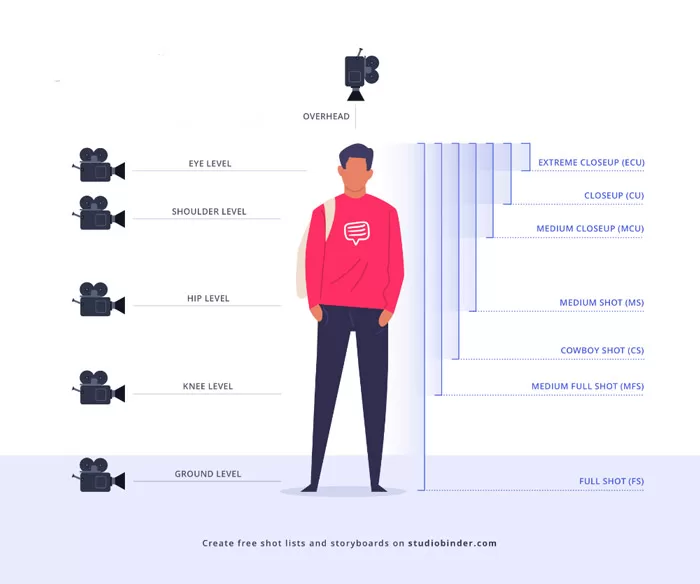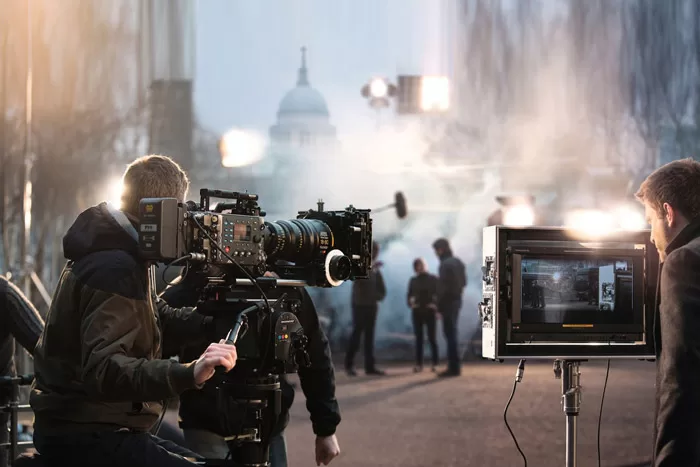In the world of filmmaking, every shot serves a purpose. From establishing the scene’s mood to conveying emotion and storytelling, the art of cinematography relies heavily on understanding and utilizing various types of camera shots. In this article, we will delve into the fundamental aspects of cinematography, exploring different camera shot sizes, framing techniques, depth of field, focus, and angles that every aspiring filmmaker should be familiar with.
Types of Camera Shot Sizes
Camera shot sizes refer to how much of the subject is visible in the frame. Here are the most common shot sizes:
Extreme Wide Shot (EWS): Also known as an establishing shot or aerial shot, the EWS sets the scene by showing a broad view of the location. It helps orient the audience and establish the context.
Wide Shot (WS): The wide shot captures the subject within their environment, providing more detail than an EWS. It is commonly used to show the subject’s relationship with the surroundings.
Medium Shot (MS): The medium shot frames the subject from the waist up or from the knees up. It is a versatile shot size that allows for a closer view of the subject while still providing context.
Medium Close-Up (MCU): Focusing on the character’s face and upper body.
Close-Up (CU): The close-up shot focuses on a specific detail or the face of the subject, conveying their emotions or emphasizing important elements. It creates intimacy and draws the audience’s attention.
Extreme Close-Up (ECU): The extreme close-up shot focuses on a small detail or a specific feature, such as an eye or a hand. It adds intensity and highlights specific actions or emotions.
clslearn offers you the best courses in the course of Video Editor & Colorist
What Are the Basic Types of Camera Shots?
Camera shots can be categorized not only by size but also by their purpose within the story. Let’s explore these basic types:
Establishing Shot: Introducing the audience to the scene’s location.
Cutaway Shot: Offering a brief glimpse of something outside the main action.
Reaction Shot: Capturing a character’s response to an event.
Insert Shot: Focusing on a specific object or detail to convey information.
Types of Camera Shot Framing

Camera shot framing refers to how the subject is positioned within the frame. Here are some common framing techniques:
Rule of Thirds: The rule of thirds divides the frame into a grid of nine equal parts. By placing the subject along the intersecting lines or at the intersection points, the shot becomes visually balanced and aesthetically pleasing.
Centered Framing: Centered framing places the subject in the middle of the frame, creating a symmetrical and focused composition. It is often used for formal or static shots.
Dutch Angle: The Dutch angle, also known as the canted angle, tilts the camera to create a sense of unease or disorientation. It is used to convey tension, chaos, or a character’s psychological state.
What Is Depth of Field?
Depth of field refers to the range of distance in a shot that remains in focus. This creative tool can isolate subjects or immerse viewers in a broader scene.
Types of Camera Shot Focus
Camera shot focus refers to the clarity or sharpness of the subject within the frame. Here are two common focus techniques:
Shallow Depth of Field: A shallow depth of field keeps the subject in focus while blurring the background. It draws attention to the subject and creates a sense of depth and separation from the surroundings.
Deep Depth of Field: A deep depth of field keeps both the subject and the background in sharp focus. It is often used in landscape shots or scenes where all elements in the frame are equally important.
Types of Camera Shot Angle
Camera shot angle refers to the position of the camera about the subject. Here are a few shot angles commonly used in filmmaking:
Eye-Level Shot: The eye-level shot is taken from the observer’s eye level, creating a neutral and natural perspective. It is commonly used for dialogue scenes or to establish a connection with the characters.
High Angle Shot: The high angle shot is taken from above the subject, looking down on them. It can convey vulnerability, weakness, or inferiority.
Low Angle Shot: The low angle shot is taken from below the subject, looking up at them. It can create a sense of power, dominance, or intimidation.
Exploring Types of Film Shots

- Extreme Long Shot (ELS)
Also known as the establishing shot, the ELS sets the scene by showcasing expansive landscapes or cityscapes. It gives viewers a sense of location and scale, setting the tone for the story. - Long Shot (LS)
The LS frames characters within their environment, providing context and revealing interactions between characters and their surroundings. - Medium Shot (MS)
This shot captures characters from the waist up, maintaining a balanced focus between characters and their actions. - Close-Up (CU)
The CU brings the audience close to the subject, highlighting emotions, details, and expressions. It’s effective for emphasizing a character’s reactions or important objects. - Extreme Close-Up (ECU)
The ECU delves even deeper, showcasing intricate details like a person’s eyes or an object’s texture for a dramatic impact. - Over-the-Shoulder (OTS) Shot
This shot places the camera behind one character, typically focusing on the back of their shoulder and head while capturing the character they are interacting with. It creates a sense of involvement and perspective. - Two-Shot
This shot frames two characters in the same frame, emphasizing their relationship and interactions. - Point-of-View (POV) Shot
The POV shot places the audience in a character’s perspective, allowing them to experience the scene as if they were the character themselves. - Low Angle Shot
Captured from a low position, this shot makes subjects appear powerful, dominant, or intimidating. - High Angle Shot
Taken from a higher angle, this shot can make subjects seem vulnerable, smaller, or less significant. - Dutch Angle (Tilted Shot)
The Dutch angle introduces an intentional tilt to the camera, creating a sense of unease or tension in the scene. - Tracking Shot
This shot involves a moving camera that follows the action, providing a dynamic and immersive viewing experience. - Crane Shot
Achieved using a crane or similar equipment, this shot offers a bird’s-eye view, often used for grand entrances or breathtaking visuals. - Cutaway Shot
A brief shot that interrupts the main action to showcase an object, detail, or reaction, adding depth to the scene.

Understanding the different types of camera shots, shot sizes, framing techniques, depth of field, focus, and camera shot angles is crucial for filmmakers to effectively convey their vision and engage the audience. By mastering these elements, aspiring filmmakers can elevate their storytelling skills and create visually captivating and emotionally resonant films. So, whether you’re aiming to establish a sense of place, evoke emotions, or highlight specific details, the right camera shot can make all the difference in bringing your cinematic vision to life. In the realm of filmmaking, understanding the nuances of camera shots is essential for crafting compelling stories. The various types of camera shot sizes, framing techniques, depth of field, focus, and angles offer a diverse toolkit for filmmakers to express their creative vision. By mastering these elements, aspiring filmmakers can enhance the impact of their storytelling and captivate audiences with their cinematic prowess.
























